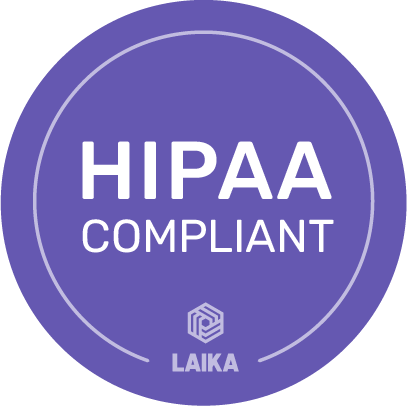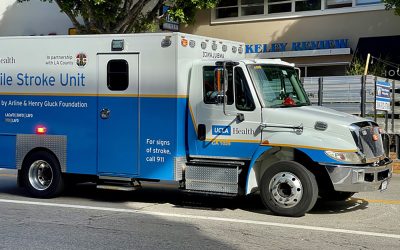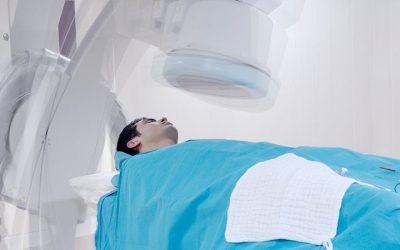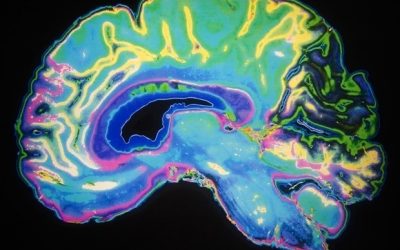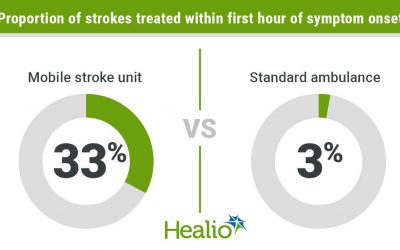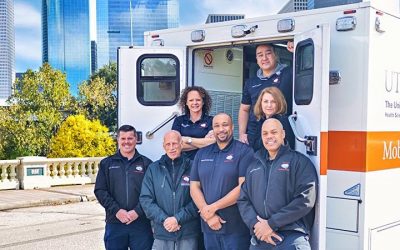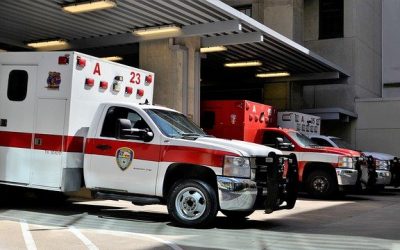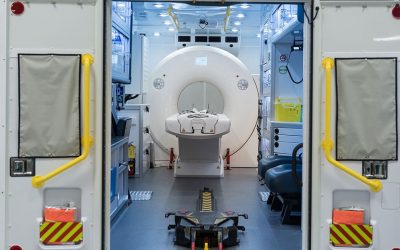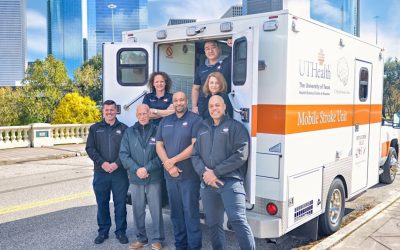
Phone and Video-Based Modalities of Central Blinded Adjudication of Modified Rankin Scores in an Endovascular Stroke Trial
Abstract Background and purpose: The standard outcome measure in stroke research is modified Rankin scale (mRS) evaluated by local blinded investigators. We aimed to assess feasibility and reliability of 2 central adjudication methods of mRS in the setting of a...
Reliability of Telephone Interview for Assessment of Long-Term Stroke Outcomes: Evidence from Interrater Analysis
Abstract Background: A comprehensive evaluation of interrater reliability is crucial when it comes to multiple coders assessing the stroke outcomes using telephone interview. The reliability between telephone raters is important, as it could affect the accuracy of the...
Validation of a structured interview for telephone assessment of the modified Rankin Scale in Brazilian stroke patients
Abstract Background: The modified Rankin Scale (mRS) is a commonly used scale to assess the functional outcome after stroke. Several studies on mRS showed good reliability, feasibility, and interrater agreement of this scale using a face-to-face assessment. However,...
The reliability of the Montreal Cognitive Assessment using telehealth in a rural setting with veterans
Abstract Background: Telehealth neuropsychological services can increase the availability of specialised care for individuals in rural areas where barriers to these services are faced. As this practice becomes more commonplace, the reliability and validity of...
A Validation Study of the Remotely Administered Montreal Cognitive Assessment Tool in the Elderly Japanese Population
Abstract Background: In an aging society, neuropsychological testing using video teleconferencing (VTC) is increasingly important. Despite the potential benefit of a VTC-administered Montreal Cognitive Assessment Tool (MoCA) to detect cognitive decline, only a limited...
Comparing face-to-face and videoconference completion of the Montreal Cognitive Assessment (MoCA) in community-based survivors of stroke
Abstract Introduction: Videoconferencing may help address barriers associated with poor access to post-stroke cognitive screening. However, the equivalence of videoconference and face-to-face administrations of appropriate cognitive screening tools needs to be...
The Virtual Neurologic Exam: Instructional Videos and Guidance for the COVID-19 Era
Objective: To outline features of the neurologic examination that can be performed virtually through telemedicine platforms (the virtual neurological examination [VNE]), and provide guidance for rapidly pivoting in-person clinical assessments to virtual visits during...
Role for telemedicine in acute stroke. Feasibility and reliability of remote administration of the NIH stroke scale
Abstract Background and purpose: Immediate access to physicians experienced in acute stroke treatment may improve clinical outcomes in patients with acute stroke. Interactive telemedicine can make stroke specialists available to assist in the evaluation of patients at...
Reliability of real-time video smartphone for assessing National Institutes of Health Stroke Scale scores in acute stroke patients
Abstract Background and purpose: Telestroke reduces acute stroke care disparities between urban stroke centers and rural hospitals. Current technologies used to conduct remote patient assessments have high start-up costs, yet they cannot consistently establish quality...
Use of mobile stroke units improves clinical outcomes
IMAGE: Berlin currently has three STEMOs, mobile stroke units which help reduce time to treatment. view more STEMOs (Stroke-Einsatz-Mobile) have been serving Berlin for ten years. The specialized stroke emergency response vehicles allow physicians to start treating...
UCLA Mobile Stroke Unit saves time, provides lifesaving care on the scene
The UCLA Mobile Stroke Unit is working to improve care for stroke victims by reducing the time between diagnosis and treatment. (Noah Danesh/Daily Bruin) Correction: The original version of this article incorrectly stated Soumya Ravichandran is a fourth-year student....
Direct Transfer to Angio Improves Outcome in Large-Vessel Stroke
Patient with suspected large-vessel occlusion stroke who were taken directly to the angiography suite, bypassing the emergency department, received endovascular treatment faster and had better 90-day functional outcomes in a new study. Results of the ANGIO-CAT trial...
Mobile stroke units deliver faster care to improve outcomes, lessen chance for disability
A new study involving UCLA researchers finds that mobile stroke units (MSUs) - state-of-the-art ambulances built to provide stroke patients with emergency neurological diagnosis and treatment prior to hospital arrival -- improve patient outcomes and lessen the chance...
Management by mobile stroke unit led to better functional outcomes vs. standard ambulance
Patients who experienced a stroke and were treated by a mobile stroke unit were more likely to be treated within the first hour of symptom onset and more likely to be disability free at 90 days, a researcher reported. According to data from the BEST-MSU trial...
Mobile stroke units improve outcomes and reduce disability among stroke patients
DALLAS, March 17, 2021 -- Stroke patients treated via a mobile stroke unit (MSU) received clot-busting medications faster and more often - and recovered significantly better than patients who receive regular emergency care by standard ambulance, according to...
Mobile Stroke Units Improve Outcomes in Ischemic Stroke
Among patients with acute ischemic stroke, treatment in a mobile stroke unit (MSU) is associated with better functional outcome at 90 days, compared with standard management by emergency medical services (EMS). Click here to view original web page at...
Mobile Stroke Units Help Buy Valuable Minutes for the Damaged Brain
Credit: F. Muhammad/ Pixabay A new study involving UCLA researchers finds that mobile stroke units (MSUs) – state-of-the-art ambulances built to provide stroke patients with emergency neurological diagnosis and treatment prior to hospital arrival -- improve patient...
Mobile Stroke Units Lead to Faster Care, Less Disability Among Stroke Patients
Mobile stroke units, such as this one from Northwestern Medicine, provide quick, lifesaving service. New research suggests mobile stroke units, state-of-the-art ambulances equipped to provide stroke patients with emergency diagnosis and treatment before they arrive at...
Mobile stroke units improve outcomes and reduce disability among stroke patients
This news release contains updated data not listed in the abstract . Research Highlights: At seven U.S. centers, patients who received care from a mobile stroke unit were less likely to have disability three months after their stroke than those taken to the emergency...
Diagnosis and treatment of patients with stroke in a mobile stroke unit versus in hospital: a randomised controlled trial
Abstract Background: Only 2-5% of patients who have a stroke receive thrombolytic treatment, mainly because of delay in reaching the hospital. We aimed to assess the efficacy of a new approach of diagnosis and treatment starting at the emergency site, rather than...
Mobile stroke units for prehospital thrombolysis, triage, and beyond: benefits and challenges
Abstract In acute stroke management, time is brain. Bringing swift treatment to the patient, instead of the conventional approach of awaiting the patient's arrival at the hospital for treatment, is a potential strategy to improve clinical outcomes after stroke. This...
Mobile stroke unit use for prehospital stroke treatment-an update
Abstract Background: Acute ischemic stroke is a treatable disease. Moreover, there is increasing evidence supporting mechanical recanalization for large-vessel occlusion, even beyond a strict time window. However, only small numbers of patients receive causal...
Melbourne Mobile Stroke Unit and Reperfusion Therapy: Greater Clinical Impact of Thrombectomy Than Thrombolysis
Abstract Background and Purpose- Mobile stroke units (MSUs) are increasingly used worldwide to provide prehospital triage and treatment. The benefits of MSUs in giving earlier thrombolysis have been well established, but the impacts of MSUs on endovascular...
Bringing Emergency Neurology to Ambulances: Mobile Stroke Unit
Abstract Ischemic stroke results from blocked arteries in the brain, with earlier thrombolysis with intravenous tissue plasminogen activator (tPA) and/or mechanical thrombectomy resulting in improved clinical outcomes. Mobile Stroke Unit (MSU) can speed up the...
Mobile Stroke Unit Computed Tomography Angiography Substantially Shortens Door-to-Puncture Time
Abstract Background and Purpose- Endovascular thrombectomy (ET) door-to-puncture time (DTPT) is a modifiable metric. One of the most important, yet time-consuming steps, is documentation of large vessel occlusion by computed tomography angiography (CTA). We...
Prehospital Stroke Management Optimized by Use of Clinical Scoring vs Mobile Stroke Unit for Triage of Patients With Stroke: A Randomized Clinical Trial
Abstract Importance: Transferring patients with large-vessel occlusion (LVO) or intracranial hemorrhage (ICH) to hospitals not providing interventional treatment options is an unresolved medical problem. Objective: To determine how optimized prehospital management...
Association Between Dispatch of Mobile Stroke Units and Functional Outcomes Among Patients With Acute Ischemic Stroke in Berlin
Abstract Importance: Effects of thrombolysis in acute ischemic stroke are time-dependent. Ambulances that can administer thrombolysis (mobile stroke units [MSUs]) before arriving at the hospital have been shown to reduce time to treatment. Objective: To determine...
Contact NeuroMerit
Use the form below to contact the NeuroMerit Company, schedule a consultation or request general information about our services.
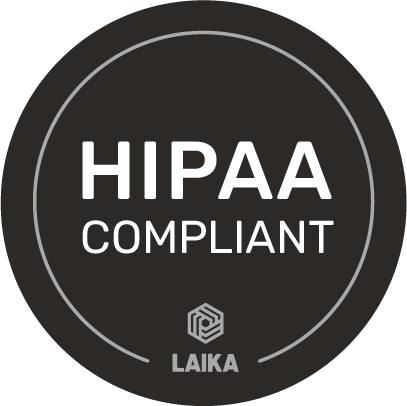
Phone
(424) 259-1233
info@neuromerit.com
HEADQUARTERS
Los Angeles, CA

